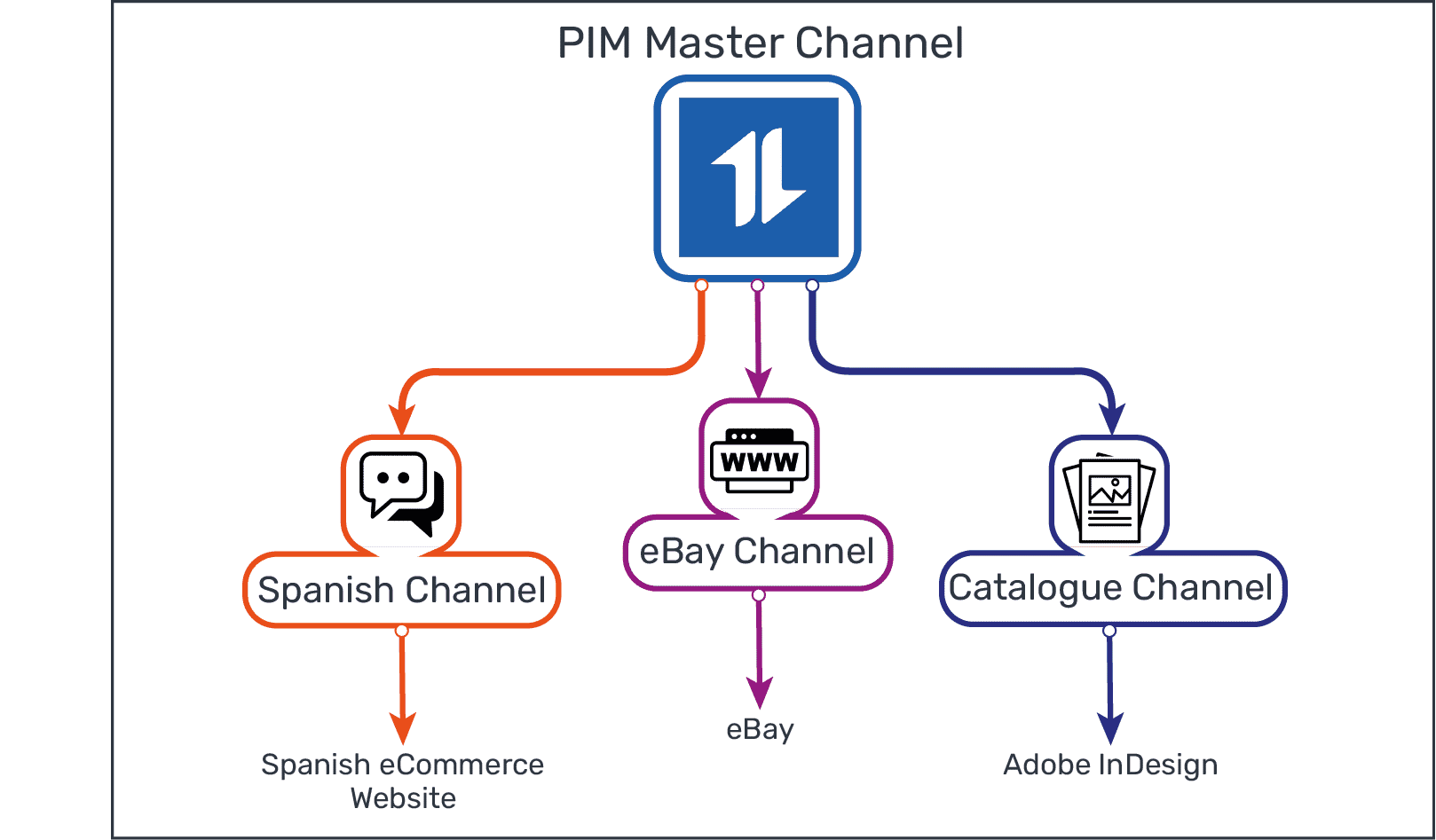Here we are going to explain 3 things you didn't know about PIM software.
Product Information Management acts as a central storage for all the product data in your company. It can then be distributed to websites, customers and catalogues. But, there are many aspects of PIM software that might not be clear until you start using it, so let's explain a few of them:
The same product information can be displayed in different ways
Many people think PIM software is only about having a central storage of product information for everyone who needs it. That is true, but there is more to it. Within PIM software, you can set up what we call channels, which are a way of displaying the same data but slightly differently.
What use is that?
Well, let's say you're selling products in multiple countries. Things like product names and descriptions will need to be in different languages for the various locations. That is where the PIM channels come in. The same product information can be stored in different languages within the same system, giving you organisation and control.
You could also be sending product information to an online marketplace like eBay, which has stricter requirements on data. For example, a limit on the number of characters in a description. An eBay channel can be set up in the PIM, separate from the master channel. This would let you store information on how that particular marketplace needs it.

It results in a significant productivity increase
Although PIM software is about managing product information, implementing a system and utilising it fully can lead to a dramatic increase in productivity across your company. Which is something that businesses should focus on for so many reasons.
Product data can bog down employees in many different ways. You could spend a lot of time dealing with requests from customers for information. Keeping data accurate across various eCommerce marketplaces might take a while. You may be constantly correcting errors in spreadsheets and other information files. Or the process for finding data scattered around in word documents, emails and PDFs could be longwinded.
One of the main advantages of PIM software is cutting out all that, which is a huge time-saving. It means staff can use their working day more effectively to benefit the company. That could be selling, marketing or producing products. Furthermore, that productivity boost can become a USP for the business, helping you outperform competitors.
It is simple to understand
There is so much noise from PIM companies around. They all offer so many different packages and features it's easy to be totally overwhelmed. Whilst it is true, every PIM system is slightly different and has its own way of doing things, the software itself should be easy to use once you're set up. If it isn't, it isn't doing its job properly.
Take the time to work out what PIM system is right for you because it is a very important decision and you will be rewarded. An integrated PIM will become a central part of your business's operations. Once staff have had the necessary training, it will be seamless. Anyone, no matter how tech-savvy there are, will be able to get the best out of it.
What's even better is that most PIM companies offer some sort of free trial. So there is no risk you'll enrol on a piece of software which you discover is more of a burden than an asset. Explore the options, try out the different PIM systems and invest in the one you find simplest to understand.
We hope this article helped to develop your understanding of Product Information Management software. Visit our blog to utilise some of the other great resources about PIM on the OneTimePIM website.